<Report from overseas office> [India] India's domestic flights and quarantine facilities after the lockdown
- Release date: Jul 10, 2020
- 9600 Views
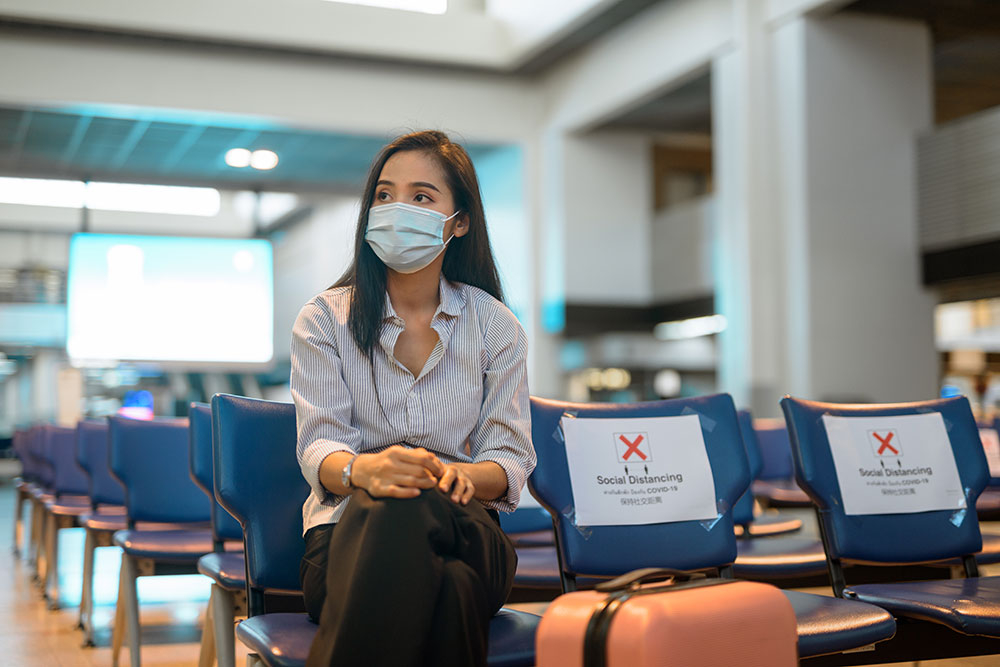
Changes in the boarding process for domestic flights after lockdown
The lockdown in India started on March 25. The day before that, on March 24, I moved from Bangalore to Delhi. As it was the last domestic flight at that time, the airport in Bangalore was crowded with people returning to various places. For about two months after that, flights within India continued to be cancelled, and only resumed at the end of May with a limited number of flights.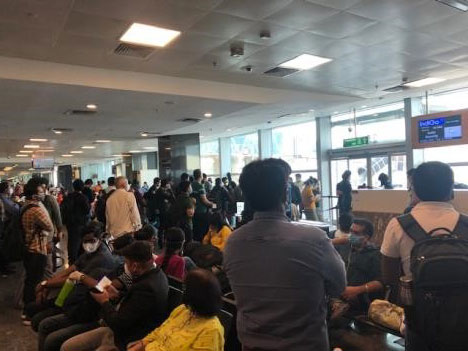
(Photo 1) Bangalore Airport on March 24. The lobby was overflowing with passengers and social distance was not maintained.
On June 25, about a month after the reopening, I headed to Indira Gandhi International Airport Terminal 3 to return to Bangalore from Delhi. Perhaps it was because I arrived before 6:00 a.m., but there were no family or friends to see me off, and the airport seemed less crowded than before. For security reasons, Indian airports require a copy of your ticket and ID card to enter the terminal, and I saw some changes there. First of all, before the security check, UV sterilization machines were installed at each gate, and all the luggage, including hand luggage, had to go through them. Also, just before entering the building, security guards stood by inside the clear board to minimize contact, and passengers had to go through the board to present their ID and a copy of their ticket. 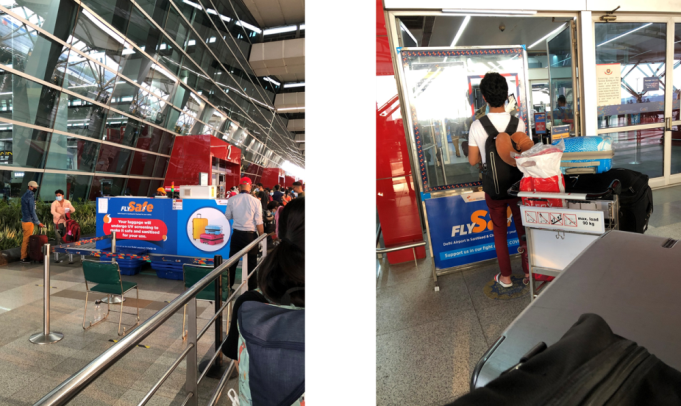
(Photo 2) UV sterilization of luggage before entering the museum.
(Photo 3) Present and check your ID and ticket receipt over the clear board.
When I entered the terminal and went to the check-in counter, there was a line drawn around my feet to maintain my social distance, and if I stood closer than that, the airport staff would ask me to leave. If you have checked baggage, you need to print out a tag from the self-check-in machine before going to the check-in counter and attach it to your baggage. 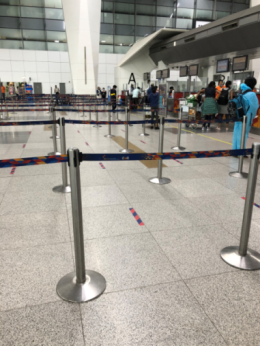
(Photo 4) In front of the check-in counter
The baggage check and body check with the metal detector was the same process as before. After that, we headed to the boarding gate, where each seat was marked with a no-seating sticker, and passengers were waiting to board wearing not only masks but also face shields and protective gear. Face shields and masks were distributed by the airlines at the boarding gates, as they are mandatory for airplane boarding. 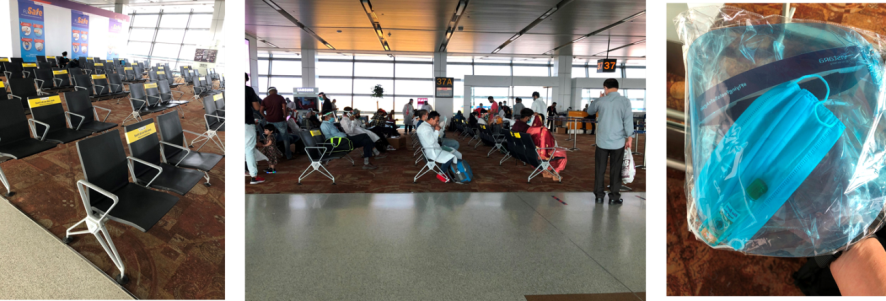
(Photo 5-6) Waiting area in front of the boarding gate
(Photo 7) PPE kit distributed before boarding.
Before the lockdown, the morning flight from Delhi to Bangalore would be packed with many business travelers, but since it was still early in the lockdown and the state of Karnataka, where Bangalore is located, had imposed restrictions on travel from Delhi, there were only about 20 passengers on board. There were only about 20 passengers on board. There was no in-flight food or beverage service during the flight, and few people moved around in the cabin, probably because the passengers were avoiding using the restroom as much as possible.As of June 25, when I boarded the plane, it was mandatory to stay at home or in a facility for a certain period of time when traveling to Karnataka from areas with a high number of cases of the new corona. Those traveling from Maharashtra (Mumbai), the state with the highest number of cases in India, were required to undergo one week of institutional quarantine and one week of home quarantine, while those traveling from Delhi (the capital) and Tamil Nadu (Chennai) in the south were required to undergo three days of institutional quarantine and 11 days of home quarantine. It was also necessary to register their address and contact information on a special website and app (Seva Sindhu) beforehand so that they could be tracked after their arrival in Karnataka. This app was only available for Android, so iPhone users had to print out the information they had registered on the website and bring it with them.
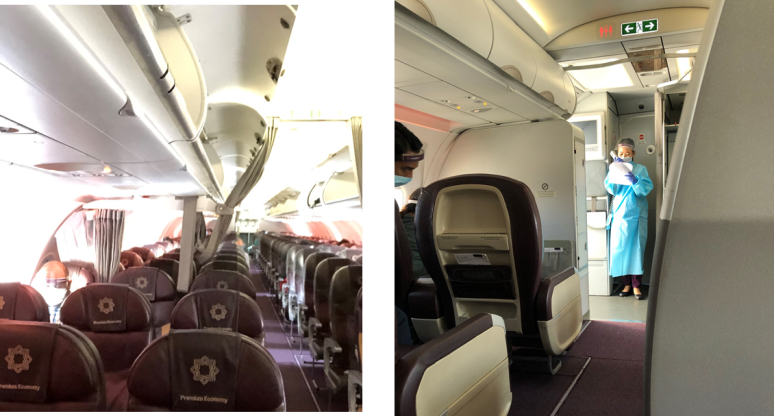
(Photo 8-9) A view of the cabin, with CAs also wearing protective suits.
Post-landing inspection system and isolation facilities
Upon landing and entering the terminal building, we were first checked for temperature and then moved to a booth to be stamped according to the quarantine requirements. There were separate booths for passengers from Delhi, Mumbai, and other areas that require institutional quarantine, and for passengers from other areas, so that passengers from quarantined areas could be moved to the proper facilities (hotels).There were two types of stamps available: Home quarantine and Institutional quarantine, along with the quarantine period, which were stamped on my boarding pass and left hand. The ink of this stamp may contain ingredients from henna, or it may remain on your hand for a few days as the dye takes hold in your skin. This may be an effective deterrent for people who want to go out during the quarantine period, as the stamp will be noticeable.
There was also a small problem in the zone where the stamp was applied, probably because they did not anticipate that foreigners like me would be moving around the country. In order to enter India from abroad, you need to take a PCR test beforehand to prove that you are negative, but I had not taken the test because I knew that it was not necessary for domestic travel. Therefore, the first attendant told me that if I had not taken the test, I could not leave the airport. Since it is common in India that information is not properly communicated to the staff level, I was taken to a superior and explained again that I was traveling within the country, and showed him my entry documents that I had registered in advance.
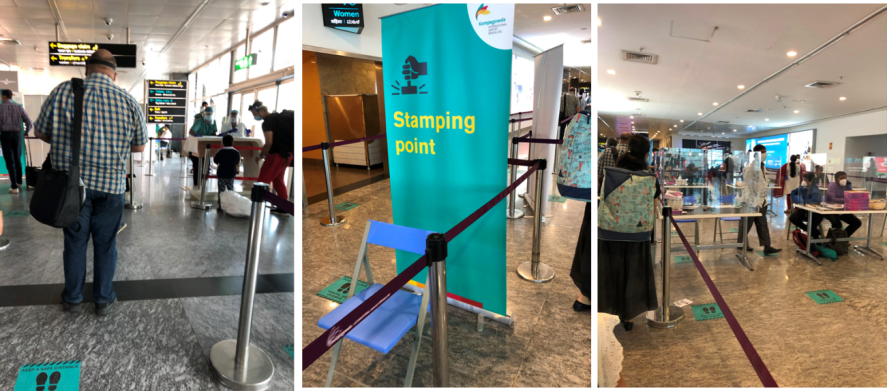
(Photo 10) Space for temperature check after arrival
(Photo 11-12) Depending on the conditions of the area where you boarded the plane, you will be stamped.
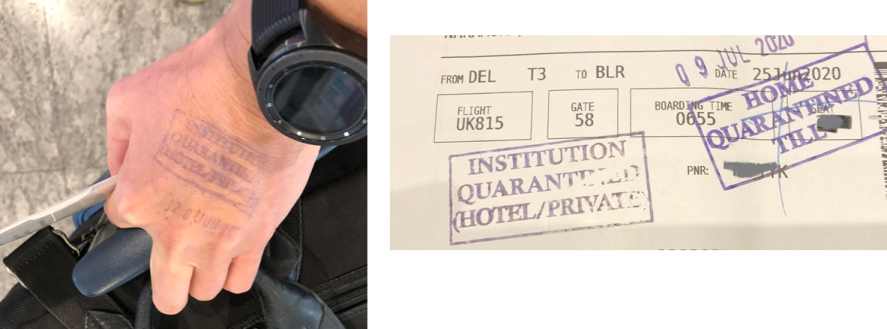
(Photo 13-14) The stamp on the left hand and the ticket, which was mistakenly stamped for home isolation, being corrected.
The passengers from Delhi were then gathered in one place and directed to a booth to be briefed about the hotel that would be their quarantine. We were only allowed to choose the rank of the hotel that would be our facility, which was Non-Star, 3Star, or 5Star. However, since we couldn't choose even individual hotels, all passengers who chose 5Star, for example, were supposed to be transferred to the same hotel. The conditions of the quarantine facilities that I had seen in the news and social networking sites beforehand were very poor, so I was worried about the hotel I would be assigned, but the hotel I was assigned was a chain hotel in India, so I felt relieved and decided to wait for a while at the waiting area. 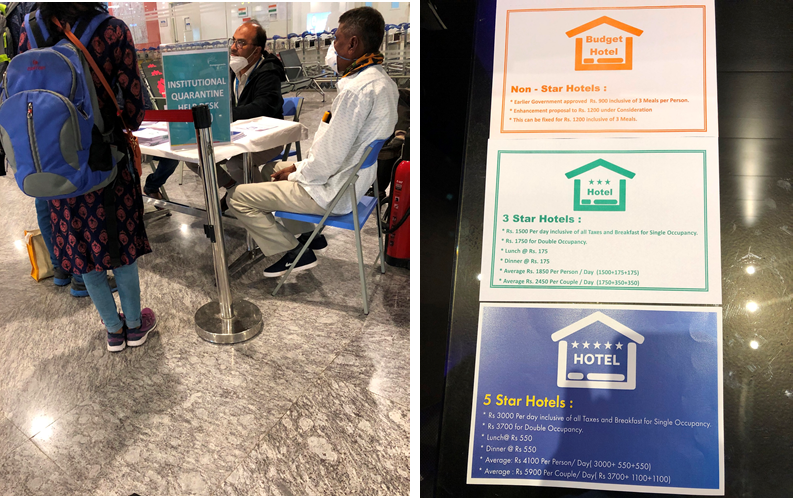
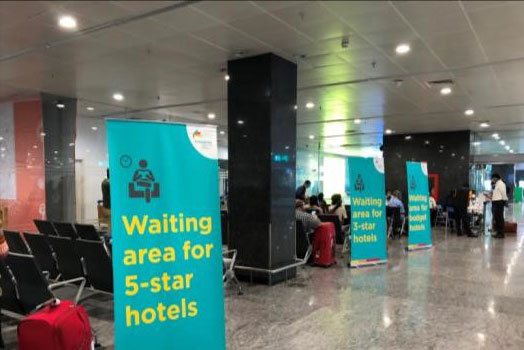
(Photo 15-16) The reception desk at the quarantine hotel and the cost sheet given there.
(Photo 17) In the waiting area before the hotel transfer, there are separate seats for each hotel class.
After the hotel registration of all the quarantine subjects was finished, we followed the staff's guidance to the bus for transportation. I was expecting a tourist bus, but what we were provided was a city bus. The fare was 300 rupees per person. The bus was not equipped with a cooler and ran with the windows open, but it was probably safer in terms of maintaining ventilation. The city of Bangalore was less crowded than it was before the lockdown, but there were still quite a few people and traffic, and I got the impression that the city had returned to a near-normal state. On the other hand, when I saw people walking around without masks and supermarkets that seemed to have no restrictions on entry, I felt anxious that the number of infected people might expand again. 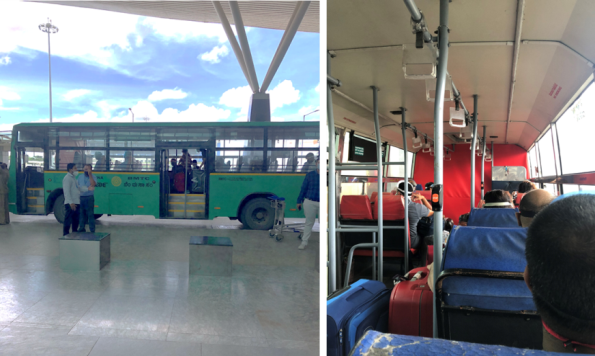
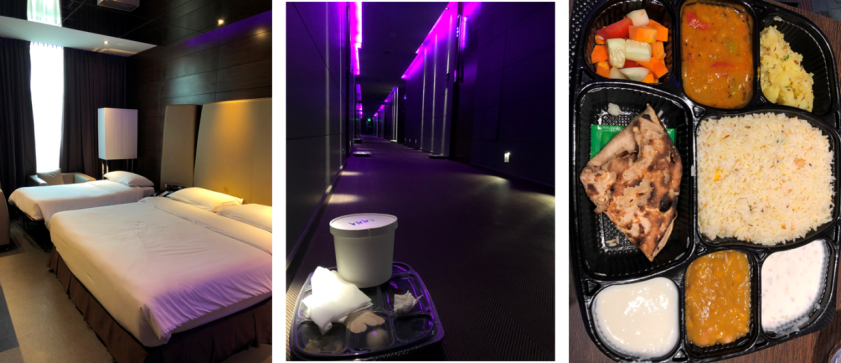
(Photos 20, 21, 22) Hotel for isolation (indoor, outdoor, food)
Finally.
Through this trip, I could see that both the airport and the hotel were taking measures to avoid human-to-human contact as much as possible as a countermeasure against the new Corona. For the time being, safety is the top priority, so keeping the distance between seats and using protective measures such as face guards and masks will probably be the default when traveling. In addition to airports, contactless systems are expected to be introduced in other service industries to reduce the risk of infection. For example, an announcement has been made at an upscale shopping mall in Bangalore that they will change the system so that food court orders will be placed through an app instead of at the counter. The number of new Corona cases continues to rise, and India is expected to continue living WITH Corona for some time to come. I sincerely hope that such contactless and digitalization will enhance safety, bring early resolution, and revitalize economic activities.* This paper is written based on the experience as of June 25, 2020. This report is based on my experience as of June 25, 2020, and is subject to change by the Indian government and state governments, so please be aware that this is not the latest information available.
Related Report
A report on the changes in India during the lockdown and going forward after the lockdown can be downloaded below.Impact of Corona on Indian Consumers (April 2020)
Lifestyle changes of Generation Z during lockdown period due to novel coronavirus (April-May 2020)
Impact of COVID-19 in India - From "Unlock" to "New Normal" (July-August 2020)
-
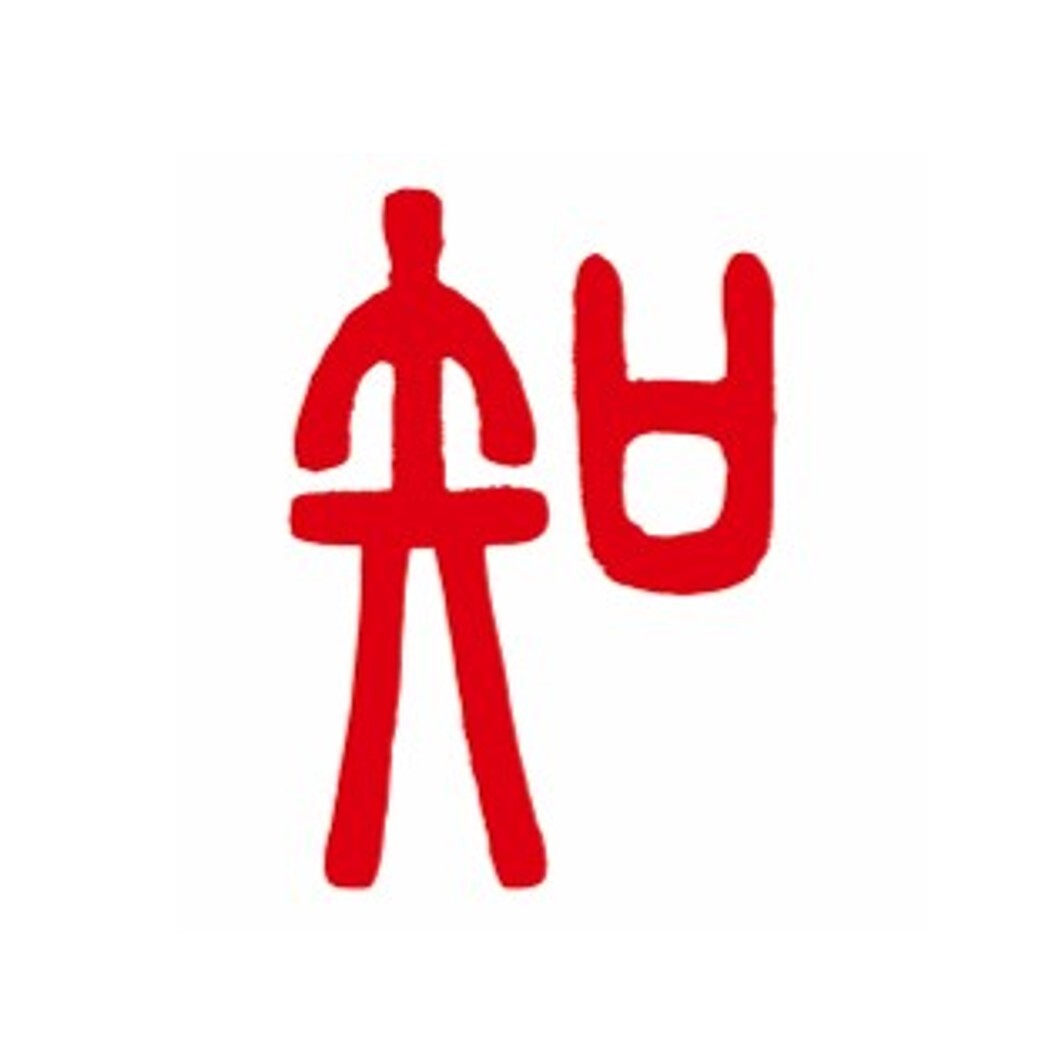
Author profile
(Mr.) Ryosuke Nakamura
A researcher living in India. He has been stationed in Mumbai, Delhi and Bangalore. In order to understand the reality of consumers hidden in the data, he travels to the field in both rural areas and slums.
-

Editor profile
Intage Inc.
―
 Global Market Surfer
Global Market Surfer CLP
CLP